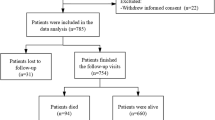Abstract
Background
Patients with essential tremor (ET) are at higher risk to develop Parkinson’s disease (PD). Recent studies suggest that propranolol (common treatment for ET) can augment pathologic expression of alpha-synuclein. We studied features associated with the development of Parkinson's disease with antecedant essential tremor (ET-PD) compared with ET-plus with parkinsonism (PK).
Design
Retrospective case series from a tertiary movement disorders center including patients with ET and PD, found to have ET-PD or ET-plus (PK).
Results
We analyzed two groups: (1) ET-plus (PK) (n = 33) and (2) ET-PD (n = 35). Constipation and anosmia were more common in the ET-PD group (73% and 48%) than in the ET-plus (PK) group (33% and 19%). The ET-plus (PK) group was more likely to undergo dopamine transporter (DAT) scans compared with the ET-PD group (73% vs. 34%) and less likely to receive levodopa trials (21% vs. 91%). There were no significant differences in self-reported REM sleep behavior disorders or beta-blocker use. Similar rates of depression, anxiety, cognitive complaints, and family history of tremor or PD were reported in both groups.
Conclusion
ET-PD and ET-plus (PK) can be clinically difficult to differentiate as they have overlapping motor and non-motor features. Beta-blocker use did not predict development of ET-PD or ET-plus (PK); however, anosmia and constipation may be helpful non-motor distinguishing features. DAT scans and levodopa trials may be valuable in clarifying the diagnoses.

Similar content being viewed by others
References
Hopfner F, Deuschl G (2018) Is essential tremor a single entity? Eur J Neurol 25(1):71–82
Fekete R, Jankovic J (2011) Revisiting the relationship between essential tremor and Parkinson’s disease. Mov Disord 26(3):391–398
Ghika A, Kyrozis A, Potagas C, Louis ED (2015) Motor and non-motor features: differences between patients with isolated essential tremor and patients with both essential tremor and Parkinson’s disease. Tremor Other Hyperkinet Mov (N Y) 5:335
Chaudhuri KR, Buxton-Thomas M, Dhawan V, Peng R, Meilak C, Brooks DJ (2005) Long duration asymmetrical postural tremor is likely to predict development of Parkinson’s disease and not essential tremor: clinical follow up study of 13 cases. J Neurol Neurosurg Psychiatry 76(1):115–117
Minen MT, Louis ED (2008) Emergence of Parkinson’s disease in essential tremor: a study of the clinical correlates in 53 patients. Mov Disord 23(11):1602–1605
Mittal S, Bjornevik K, Im DS, Flierl A, Dong X, Locascio JJ et al (2017) beta2-Adrenoreceptor is a regulator of the alpha-synuclein gene driving risk of Parkinson’s disease. Science 357(6354):891–898
Gronich N, Abernethy DR, Auriel E, Lavi I, Rennert G, Saliba W (2018) beta2-adrenoceptor agonists and antagonists and risk of Parkinson’s disease. Mov Disord 33(9):1465–1471
Searles Nielsen S, Gross A, Camacho-Soto A, Willis AW, Racette BA (2018) beta2-adrenoreceptor medications and risk of Parkinson disease. Ann Neurol 84(5):683–693
Hughes AJ, Daniel SE, Lees AJ (2001) Improved accuracy of clinical diagnosis of Lewy body Parkinson’s disease. Neurology 57(8):1497–1499
Bhatia KP, Bain P, Bajaj N, Elble RJ, Hallett M, Louis ED, Raethjen J, Stamelou M, Testa CM, Deuschl G, the Tremor Task Force of the International Parkinson and Movement Disorder Society (2018) Consensus statement on the classification of tremors. From the task force on tremor of the International Parkinson and Movement Disorder Society. Mov Disord 33(1):75–87
Tarakad A, Jankovic J (2018) Essential tremor and Parkinson’s disease: exploring the relationship. Tremor Other Hyperkinet Mov (N Y) 8:589
Schenck CH, Boeve BF, Mahowald MW (2013) Delayed emergence of a parkinsonian disorder or dementia in 81% of older men initially diagnosed with idiopathic rapid eye movement sleep behavior disorder: a 16-year update on a previously reported series. Sleep Med 14(8):744–748
Acknowledgments
Many thanks to our colleagues at the University of Miami.
Author information
Authors and Affiliations
Corresponding author
Ethics declarations
Conflict of interest
The authors declare that they have no conflicts of interest.
Ethical approval
The Institutional Review Board approved this process, and all patients were de-identified.
Additional information
Publisher’s note
Springer Nature remains neutral with regard to jurisdictional claims in published maps and institutional affiliations.
Rights and permissions
About this article
Cite this article
Lau, H.L., Marmol, S.E. & Margolesky, J. Features in essential tremor and the development of Parkinson’s disease vs. parkinsonism. Neurol Sci 41, 3249–3253 (2020). https://doi.org/10.1007/s10072-020-04439-w
Received:
Accepted:
Published:
Issue Date:
DOI: https://doi.org/10.1007/s10072-020-04439-w




